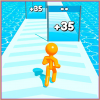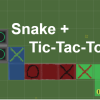Sliding Puzzle
About Sliding Puzzle
Sliding Puzzle is a classic and captivating puzzle game that has been entertaining people for decades. This simple yet challenging game requires strategic thinking and patience. It's a great way to exercise your brain and test your problem-solving skills. In this article, we'll explore the history of the Sliding Puzzle game, its rules, strategies, and the enduring appeal it holds for players of all ages.
History
The origin of the Sliding Puzzle game can be traced back to the 19th century when it was invented by Noyes Palmer Chapman in 1880. The game was initially known as the "15 Puzzle" because it consisted of a 4x4 grid with 15 numbered tiles that could be rearranged. The goal was to slide the tiles around to reorder them in numerical order, leaving one space open. The game quickly gained popularity and became a sensation.
Rules
The rules of the Sliding Puzzle game are straightforward, making it accessible to players of all ages. Here's how the game is typically played:
The game board consists of a grid of squares, usually 3x3, 4x4, or 5x5, with one square left empty.
The tiles or pieces are initially scrambled, and the goal is to rearrange them to achieve a specific configuration, often in numerical order.
To move a tile, you slide it into the empty square.
The game continues until the player successfully arranges the tiles in the desired order or pattern.
Strategies
While the Sliding Puzzle game is simple to understand, it can be deceptively challenging to solve. To conquer the game, you may want to consider these strategies:
Start with the corners: Begin by arranging the tiles in the corners of the puzzle board. This helps you create a structure to build upon.
Work from the outside in: After placing the corner pieces, focus on organizing the tiles around the edges before tackling the central tiles.
Visualize the end goal: Before making a move, visualize the final arrangement of the tiles to plan your next steps more effectively.
Practice, practice, practice: Sliding Puzzle is a game of skill that improves with practice. The more you play, the better you'll become at recognizing patterns and solving the puzzle efficiently.
Enduring Appeal
The Sliding Puzzle game's enduring appeal lies in its simplicity and complexity combined. It's a game that can be enjoyed by both casual and serious gamers, offering a satisfying mental challenge that can be revisited time and time again. Its portable nature makes it an excellent choice for passing the time during commutes or waiting in line.
Additionally, Sliding Puzzle games have been adapted into various themes and designs, making them more engaging and personalized. Themes can range from classic number puzzles to images of famous artworks, landscapes, or pop culture icons, adding a layer of aesthetic appeal to the game.
Conclusion
Sliding Puzzle is a timeless game that has remained popular for over a century due to its ability to captivate and challenge players. It's an ideal pastime for people of all ages, offering an opportunity to sharpen problem-solving skills and enjoy a satisfying mental workout. So the next time you're looking for a stimulating brain teaser, consider picking up a Sliding Puzzle game and enjoy the simple yet delightful experience it offers.
How to play Sliding Puzzle
Using Mouse and Keyboard



































































